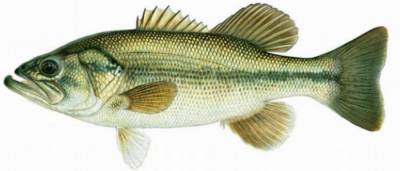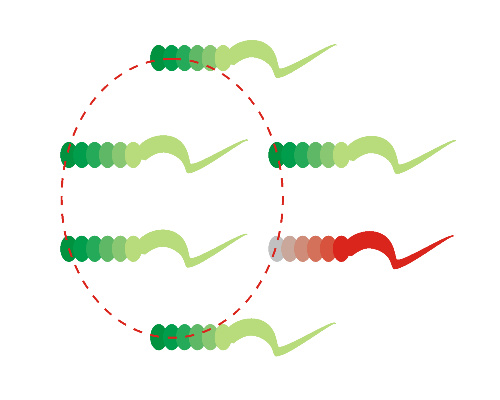General
Small fish
are forced to live in schools, in which the large number of potential prey
hampers, in addition to other benefits, the hunting of predatory fish and other
predators for an individual prey. This effect of predator desorientation is
called confusion effect (Neill & Cullen, 1974; Gillett
et al., 1979; Milinski,
1979; Landeau &
Terborgh, 1986; Smith
& Warburton, 1992; including theory Jeschke & Tollrian, 2005; Tosh et al., 2006; Ruxton et al., 2007; Ioannou et al.,
2008). To avoid this
effect, predatory fish use several tactics to hunt for schooling prey. One of
them is eliminating in schools the so called odd prey that differ on their species
belonging, shape, size, armour, color and behaviour from the school mates (Major,
1978; Ohguchi, 1981;
Theodorakis, 1989; Ranta & Lindström, 1990; Krause & Godin, 1994; Peuhkuri, 1997; Mathis & Chivers, 2003; Almany et al., 2007; Jones et
al., 2010; Rodgers et al. 2011).

Largemouth bass, Micropterus salmoides (powered by Joseph Tomelleri)
Landeau
& Terborgh (1986) have conducted some experiments to clarify the roles of confusion effect and
prey oddity as they interact to influence the hunting success of predators. Largemouth
bass (Micropterus salmoides) quickly
captured solitary silvery minnows (Hybognathus
nuchalis), but performed many unsuccessful attacks as prey school size was
increased. At school sizes of
8 and above, predators were effectively stymied demonstrating
the confusion effect. An inclusion of 1 or 2 odd (blue dyed) minnows in the
school of 8 members greatly increased the ability of bass to capture both
normal and odd prey, but this effect disappeared at the school size of 15. The
implications of the foregoing results for understanding the adaptive basis of
mixed species flocks, herds and schools in various animals is discussed (Landeau
& Terborgh, 1986).
The number
of prey, rather than the density or area occupied by the group, has the greatest
effect on the predator confusion (Tosh et al., 2006; Ruxton et al., 2007;
Ioannou et al., 2008). In addition, it is shown (Tosh et al., 2006) that the
confusion effect is U shaped with the strongest changes for 5-15 members of
model groups.
Fishing practice
Umbrella rigs
allow to imitate small groups of fish and other animals, with the number of lures
ranged usually from 3-6 for casting rigs to several tens for trolling rigs.
With this number of lures, the confusion effect may occur. To verify the
occurrence of this effect, we have tested in the field commercial radially
symmetric casting umbrellas equiped with 5 matched and 1 odd lures.
 Figure 1. Umbrella rig with 6 radial arms, 5 matched and 1 odd lures (details are not shown)
Figure 1. Umbrella rig with 6 radial arms, 5 matched and 1 odd lures (details are not shown)
An umbrella
pattern with 5 matched and 1 odd lures is demonstrated schematically in Fg.1
(six arms and hooks are not shown). Commercial Curly Tail Grubs (1″) of Green
Body & Lime Tail (LT) and White Body & Red Tail (RT) colors were used.
Abundant common
perch, Perca fluviatilis, were selected
as an usable fish model.
If the confusion and prey oddity effects do not occur, the total number
of caught perch must be distributed on average with an equal probability between six lures, 1/6.
During 2 test days, 71 perch were landed: 50 for LT and 21 for RT. The mean
value is 11,8 perch per one lure, both matched and odd one. Because an odd
lure attracted 21 perch instead of mean 11,8, it means that in the foregoing special
conditions of multiple choice perch prefer to select lures on color oddity.
Basic References
...
Read more »





